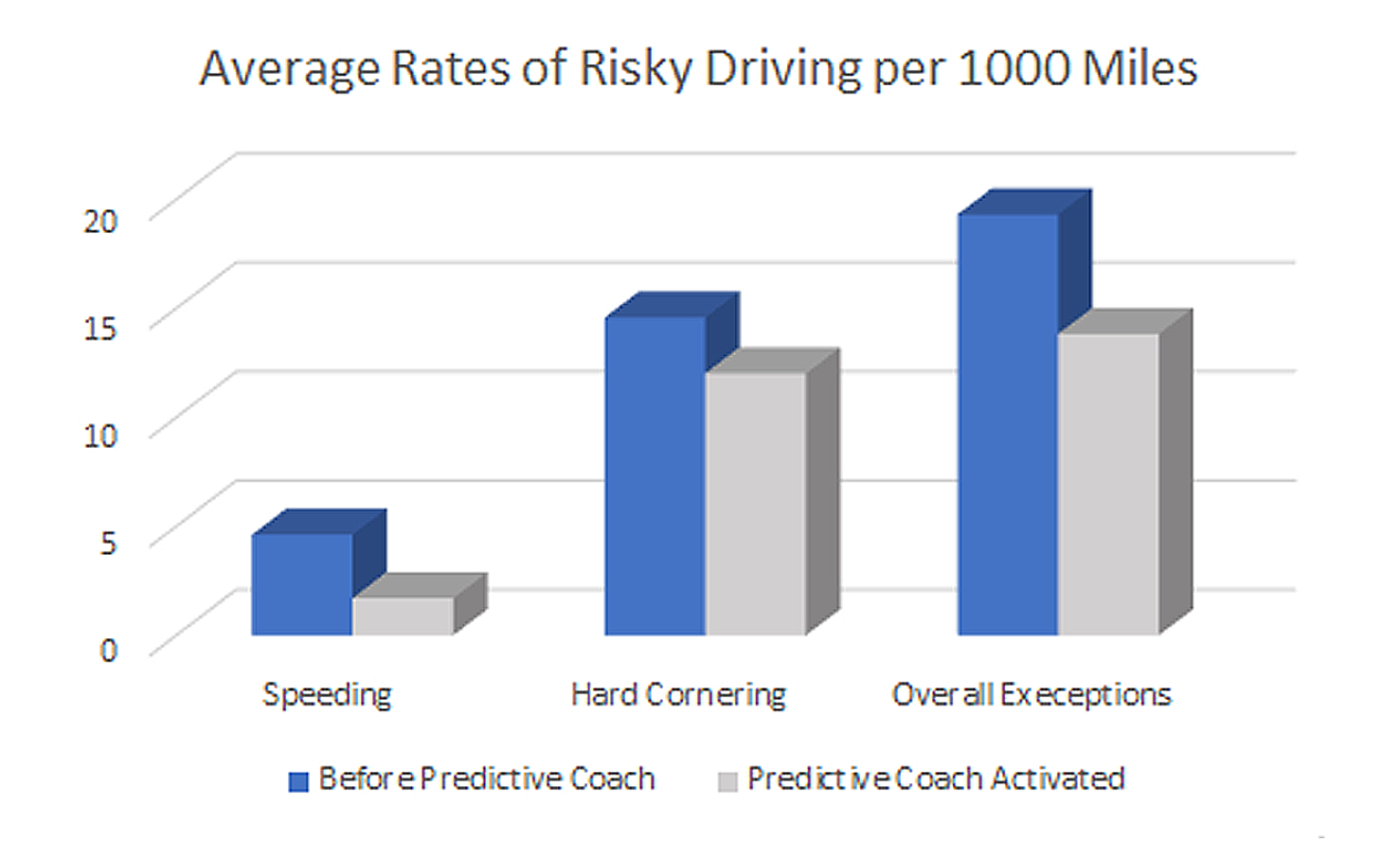Analyses focused on two assessments. The first analysis goal was to compare the mean rates of the targeted risky driving behaviors prior to and after the targeted Predictive Coach intervention. The second analysis goal was to examine response generalization to Predictive Coach training.

The objective of this study was to evaluate the ability of Predictive Coach’s driver training method to reduce risky driving behavior with Keolis, a well-established private transit fleet already using a dash camera video monitoring safety solution. The Keolis fleet was already safe, with a long history of participating in leading
video-based telematics programs. With this in mind, any positive results from the Predictive Coach program would have been impressive. However, a statistically significant reduction of 63% in excessive speeding events demonstrates the value of Predictive Coach. Even safe fleets can become safer with the Predictive Coach program.
© 2021 Predictive Coach. All Rights Reserved.
